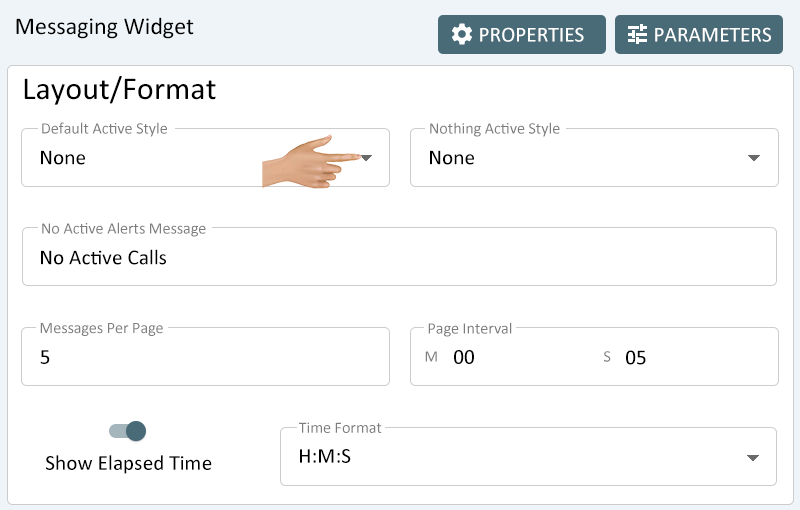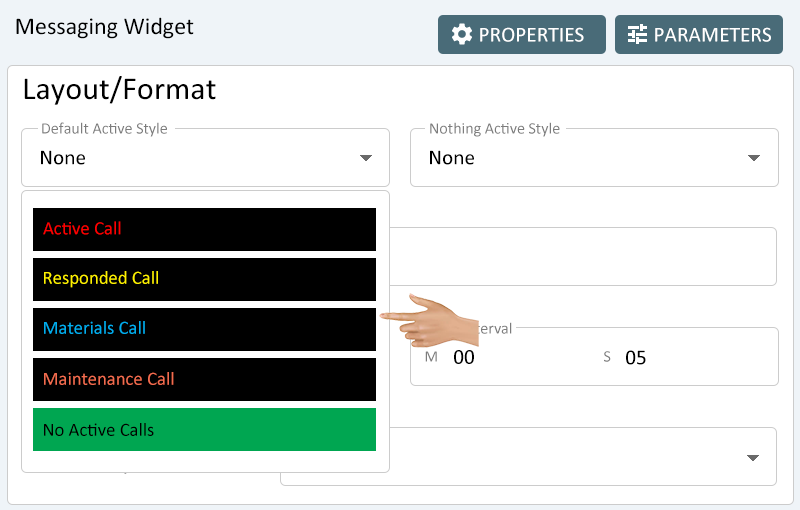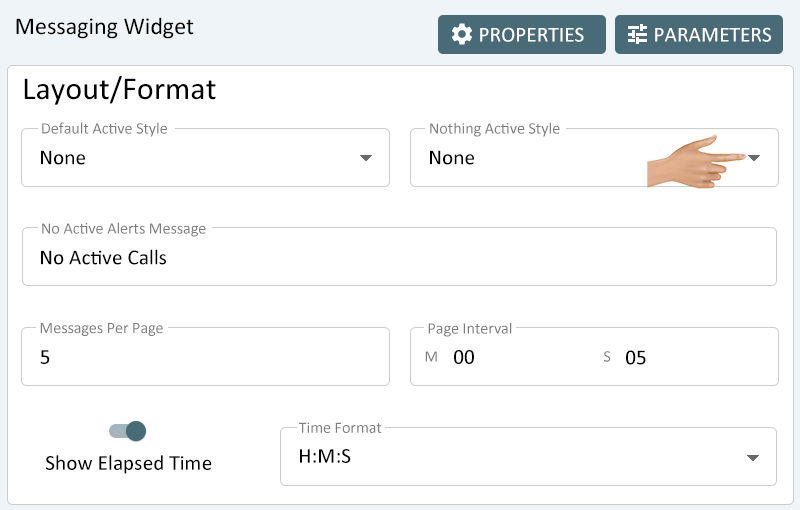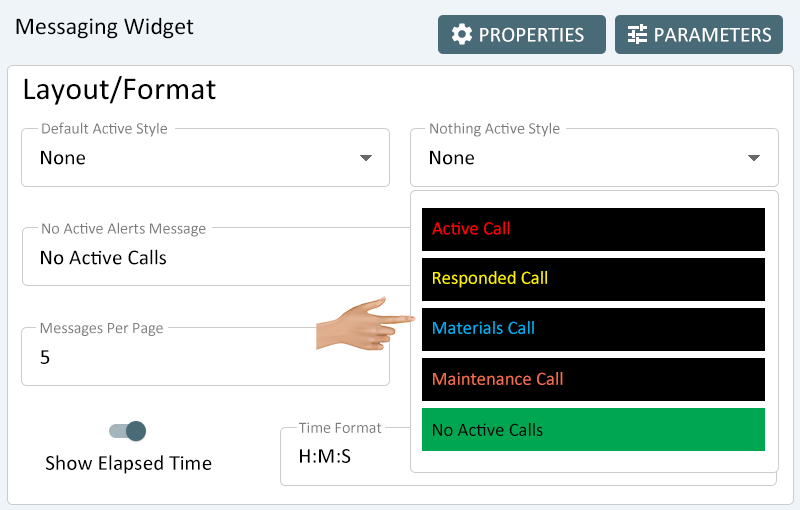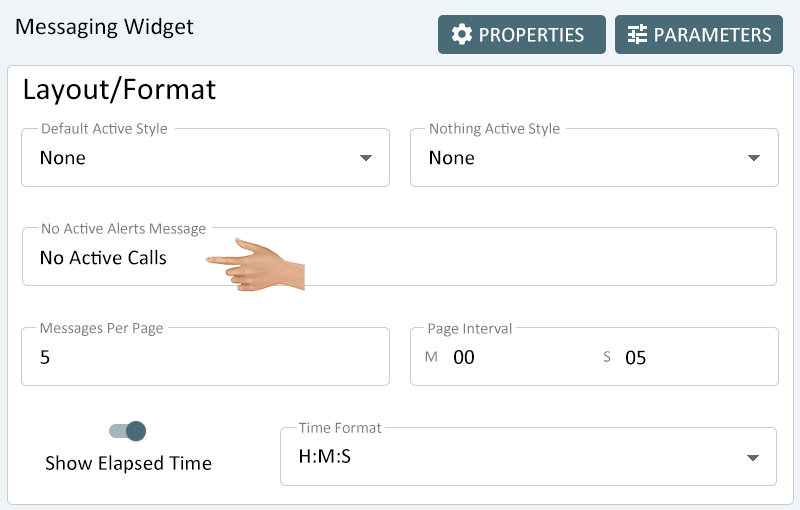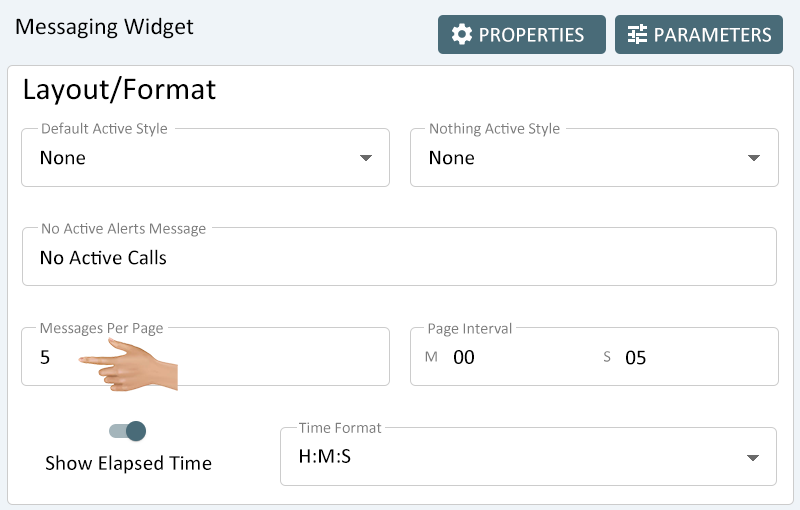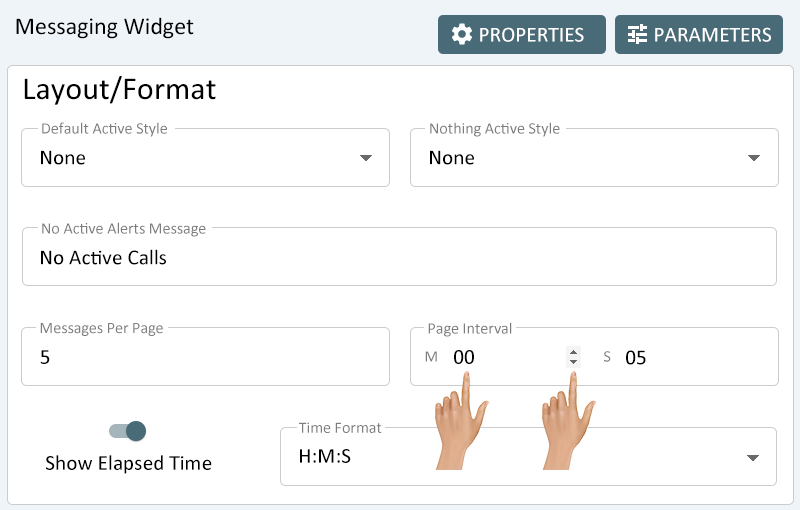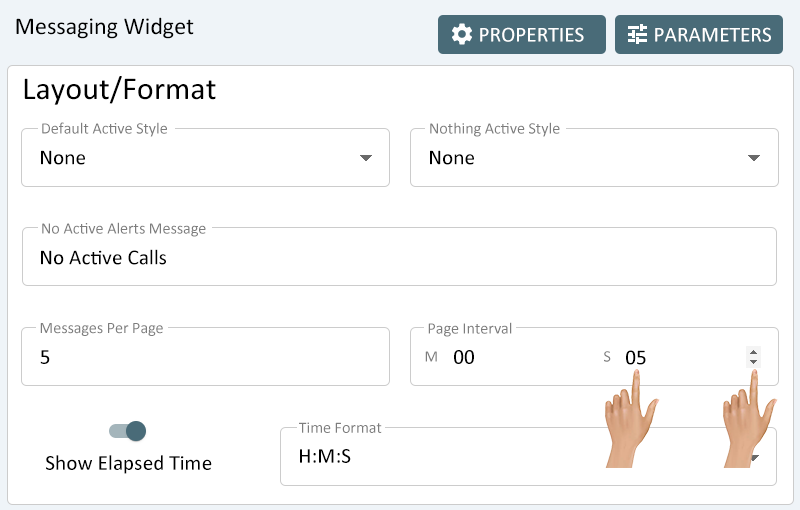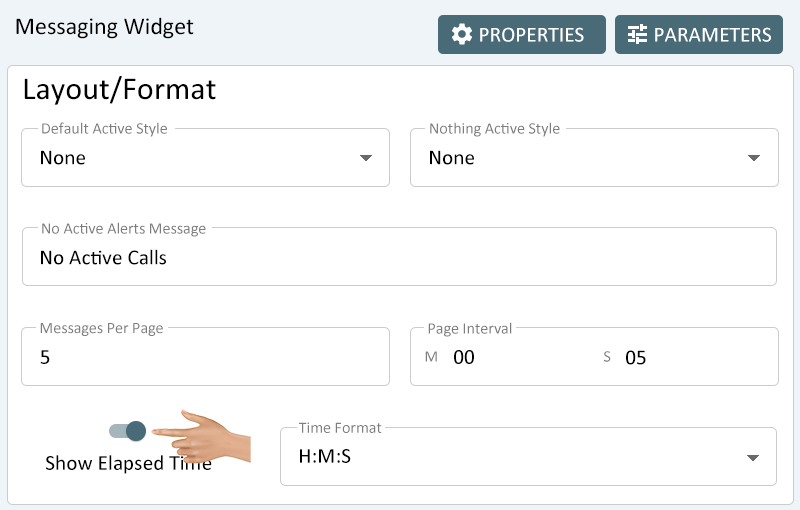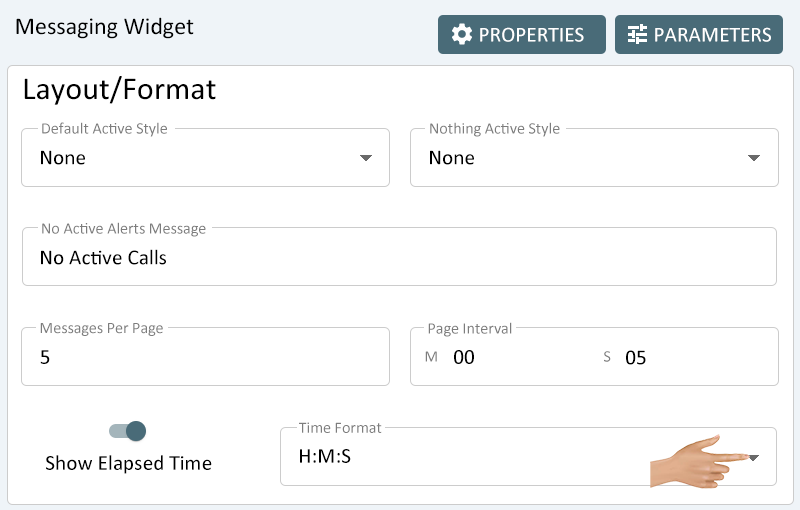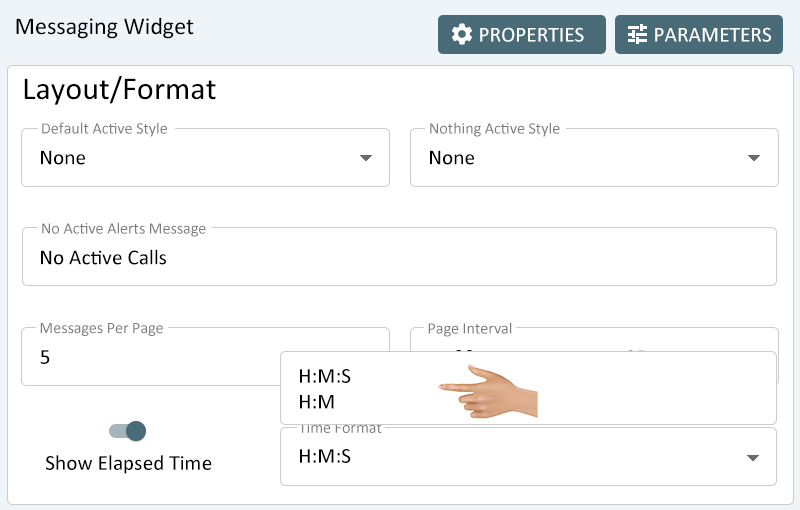Visuals - Messaging Layout/Format
From VersaVision Support
A Messaging Widget allows the user to setup a display for the Text Communications that are setup on Monitoring Points.
The Layout/Format section allows the user to define default functions and appearance.
This page will explain the use of each option in the Layout/Format section of a Messaging Widget/Dashboard.
The Default Active Style allows the user to select a Style to be used for any Active Message. This is best used when the user does not want to setup Conditional Formatting.
- Example - select a style that has a black background and red text to quickly show there is an issue.
Click on the down arrow in the Default Active Style field.
A list of all the available styles setup in the system will be shown. Find the appropriate style needed for the Widget/Dashboard and click on it.
The Nothing Active Style allows the user to select a Style to be used when there are No Active Messages.
- Example - select a style that has a green background and white text to quickly show everything is clear/running.
Click on the down arrow in the Nothing Active Style field.
A list of all the available styles setup in the system will be shown. Find the appropriate style needed for the Widget/Dashboard and click on it.
The No Active Alerts Message allows the user to setup a Text Message to be displayed when there are No Active Messages. The default text is "No Active Calls".
- Example - leave the default message in the field or type in something more specific - "All Stations Running".
Click in the No Active Alert Message field to remove, edit or add a message.
The Messages Per Page is a setting that is used to tell the system how many messages should be shown on the Widget/Dashboard before an additional page of messages is to be created. This setting is dependent upon how large of a display the Widget/Dashboard is being viewed on.
- Example - for a small ticker type of Message display the user would set the number to 1. This would ensure that each message was displayed one at a time.
Click in the Messages Per Page field and enter the appropriate number for the Widget/Dashboard being created. In some cases, the user may need to wait until the Widget/Dashboard can be viewed to know how many messages can fit on the display.
The Page Interval is where the user defines how long one page of Messages is displayed before the next page is shown.
- Example - using the 1 message per page ticker setting, the Interval would need to be 10 to 15 seconds. This would allow a viewer to see and read the message before the next one is displayed.
Click in the "M" field to set the number of Minutes. The user can either type in a number or use the Up/Down arrows on the right side to increase/decrease the interval.
Click in the "S" field to set the number of Seconds. The user can either type in a number or use the Up/Down arrows on the right side to increase/decrease the interval.
The Show Elapsed Time switch allows the user to either show the elapsed time for a message on the right side of the Widget/Dashboard or to remove that time.
- Example - when wanting a message only notification display the time would be turned off.
Toggle the switch On/Off to display or not display the elapsed time. Select the option that is appropriate for the Widget/Dashboard being created.
The Time Format field allows the user to set how the Elapsed Time is displayed on the Widget/Dashboard when the Show Elapsed Time is turned On.
Click on the down arrow in the Time Format field.
There will be 2 options available on the list. Select the appropriate setting for the Widget/Dashboard being created.
- H:M:S - this would display the time in Hours, Minutes, and Seconds - 2:15:45.
- H:M - this would display the time in Hours and Minutes - 2:15

